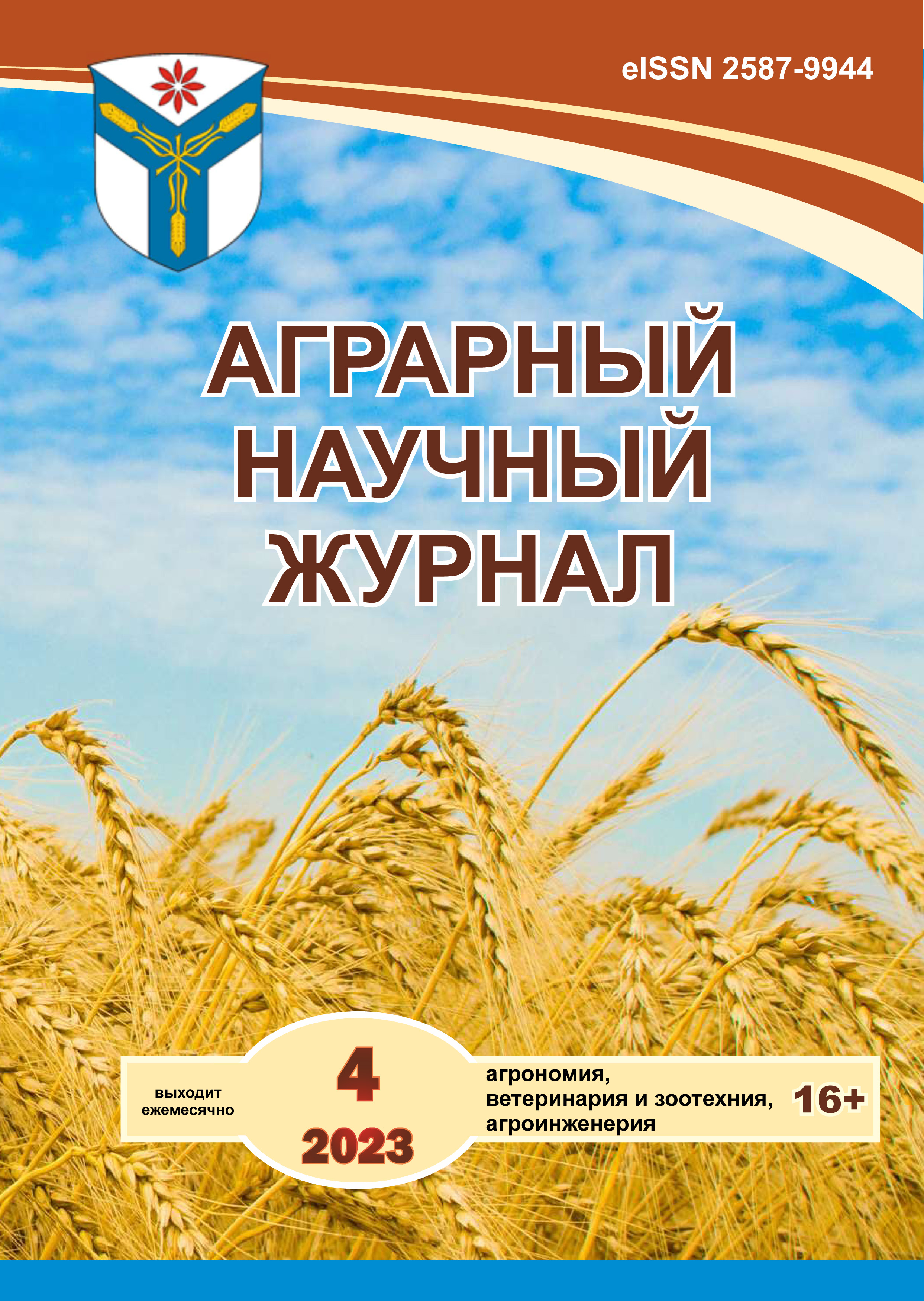Influence of basic soil treatment and moisture supply on the structural elements of soybean harvest
DOI:
https://doi.org/10.28983/asj.y2023i4pp15-19Keywords:
soybean variety Volma, soybean, main processing, plowing, moldboard loosening, disking, moisture supply, crop structure, productivityAbstract
The article presents the results of studying the influence of methods of basic tillage and moisture availability on the elements of the structure of the soybean crop: the mass of seeds per plant, the number of beans and seeds per plant, the height of the plant, the weight of 1000 seeds and the yield of soybeans of the Volma variety, after winter wheat. It was found that on average in 2020-2022. Moisture conditions developed in such a way that among the main tillage methods, high yield structure and yield were obtained in the variant with plowing by 22-24 cm - 2.2 t/ha, slightly less yield was obtained by non-moldboard loosening by 22-24 cm - 2 0 t/ha, disking with a processing depth of 16-18 cm produced the least amount of grain - 1.9 t/ha. In addition, it was noted that the method of basic processing affects the amount and dynamics of moisture in the soil during the growing season. During the germination period, the largest moisture reserves were recorded on non-moldboard loosening, and the smallest - on disking. In the flowering phase, when soybean plants urgently need moisture to form a crop, the largest amount of it was in plowing, and the smallest - in disking.
Downloads
References
Вошедский Н.Н., Кулыгин В.А. Влияние элементов технологии возделывания на урожайность новых сортов гороха в богарных условиях Ростовской // Достижения науки и техники АПК. 2021. Т. 35. № 8. С. 14-19.
Выращивание сои: стадии развития сои // Монитор агронома. URL: http://agronomok.com.ua/template/information/article.php?article=99 (дата обращения: 25.02.2023).
Основы опытного дела в растениеводстве / В.Е. Ещенко [и др.]; под ред. В.Е. Ещенко, М.Ф. Трифоновой. М., 2009. 268 с.
Кирюшин В.И., Кирюшин С.В. Агротехнологии. СПб., 2021. 464 с.
Краснова Е.А., Рзаева В.В., Линьков А.С. Влияние способов основной обработки на водно-физические свойства почвы и урожайность сои в западной Сибири // Аграрный научный журнал. 2020. № 9. С. 21-24.
Крючек Ю.И., Храмой В.К., Макарова О.А., Сихарулидзе Т.Д. Производство сои в Калужской области // Научные труды РГАУ-МСХА имени К.А. Тимирязева. Юбилейный выпуск (№11) к 150-летию РГАУ-МСХА имени К.А. Тимирязева. М., 2015. С. 31-33.
Кузыченко Ю.А., Кулинцев В.В., Кобозев А.К. Эффективность обработки почвы в севооборотах на различных типах почв Центрального Предкавказья // Земледелие. 2017. № 4. С. 19-22.
Морозов А.Н., Дубовик Д.В., Ильин Б.С. Влияние способов основной обработки почвы на засоренность посевов, урожайность и качество зерна сои // Таврический вестник аграрной науки. 2022. № 2(30). С. 74-85.
Петибская В.С. Соя: химический состав и использование. Майкоп, 2012. 432 с.
Шафигуллин Д.Р. Изучение изменчивости количественных признаков у овощных и зерновых форм сои в условиях Центральной части Нечернозёмной зоны // Зернобобовые и крупяные культуры. 2017. №. 2 (22). С. 16-23.
Volatile-mediated suppression of plant pathogens is related to soil properties and microbial community composition / M. van Agtmaal, A. L. Straathof, A. Termorshuizen, et al. // Soil Biol. Biochem. 2018. Vol. 117. P. 164-174.
Downloads
Published
Issue
Section
License
Copyright (c) 2023 The Agrarian Scientific Journal

This work is licensed under a Creative Commons Attribution-NonCommercial-NoDerivatives 4.0 International License.








